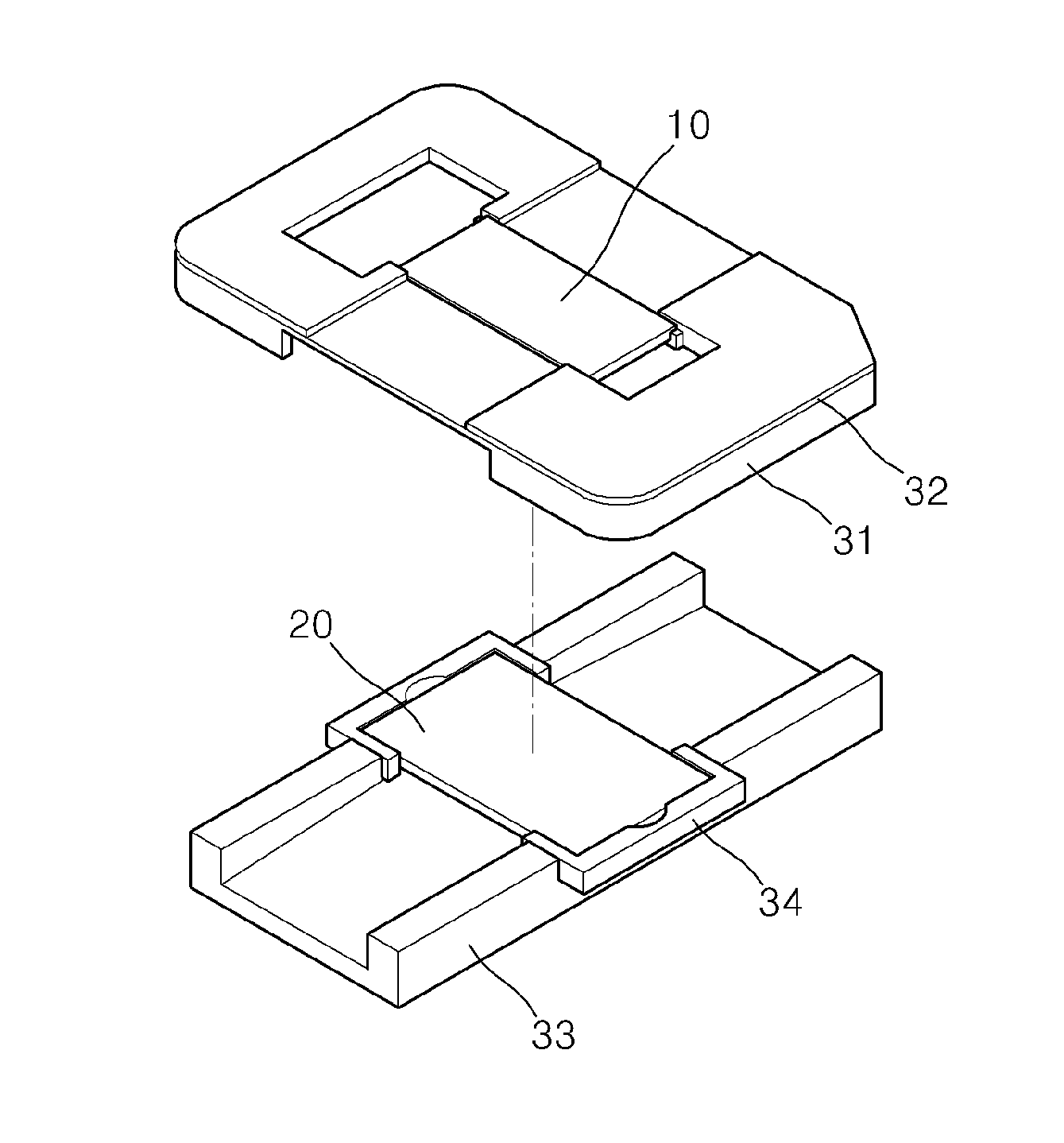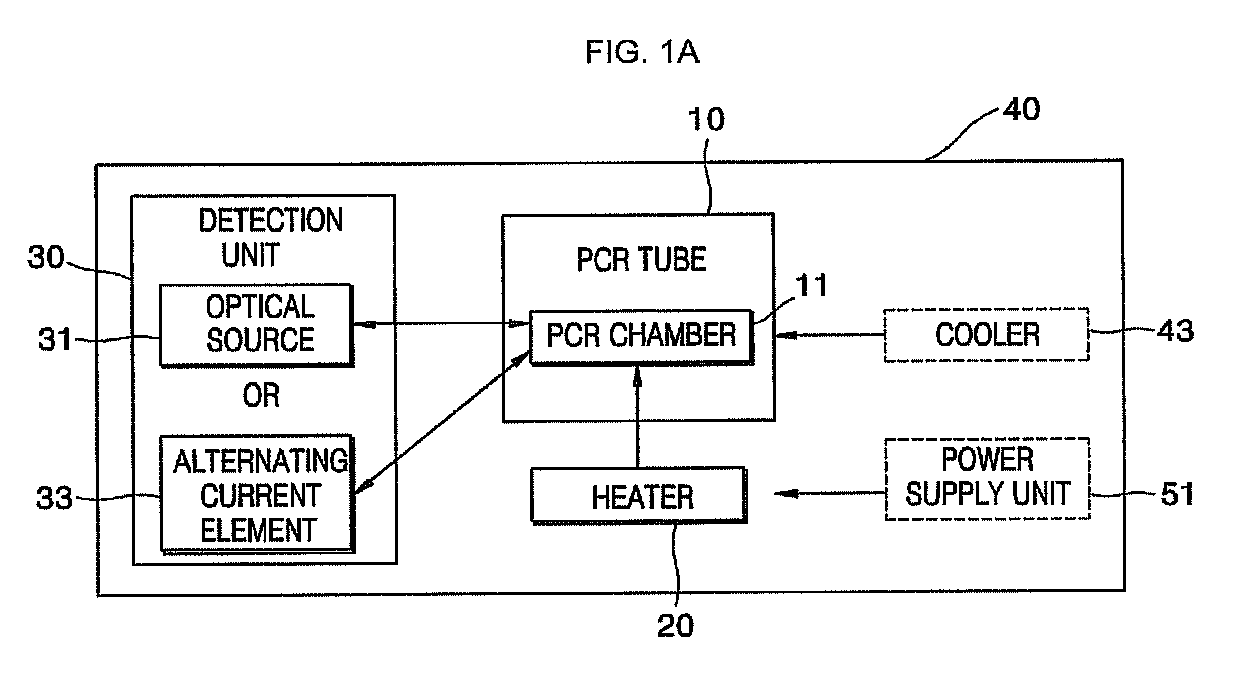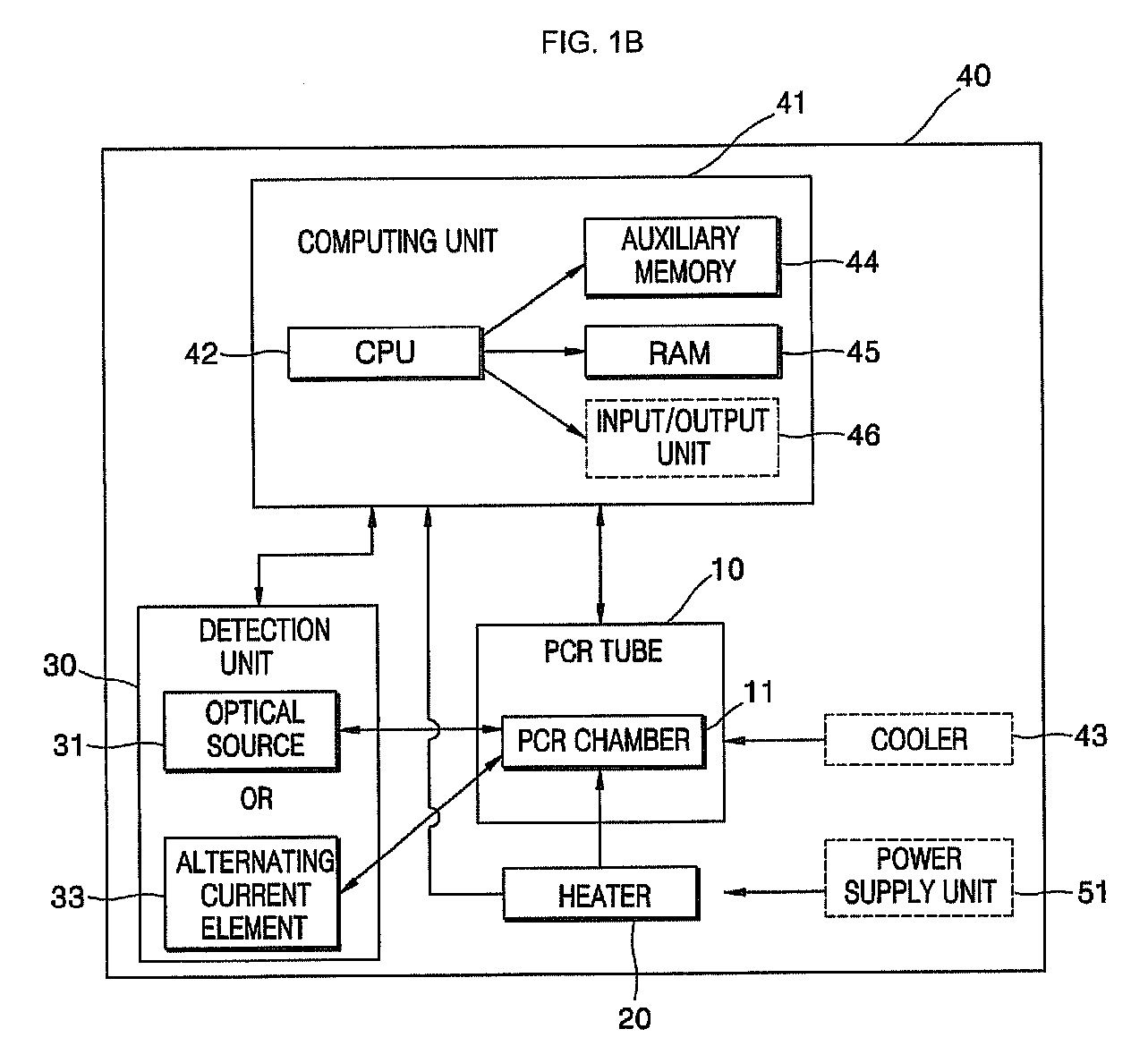Polymerase chain reaction (PCR) module and multiple PCR system using the same
a polymerase chain reaction and module technology, applied in specific use bioreactors/fermenters, laboratory glassware, biomass after-treatment, etc., can solve the problems of low success probability for accurate quantification, inaccurate detection of dna amount, complex qc-pcr,
- Summary
- Abstract
- Description
- Claims
- Application Information
AI Technical Summary
Benefits of technology
Problems solved by technology
Method used
Image
Examples
example 1
Preparation of PCR Solution
[0079]To minimize difference between PCR experiments, other reagents except DNA samples were mixed to prepare a two-fold concentrated master mixture. Then, the master mixture was mixed with the DNA samples (1:1, by volume) to obtain a PCR solution.
[0080]The composition of the master mixture is as follows:
[0081]
PCR buffer1.0 μlDistilled water1.04 μl 10 mM dNTPs0.1 μl20 μM of each primer mixture0.2 μlEnzyme mixture0.16 μl
example 2
PCR on Microchips
[0082]To investigate the effect of a thermal transfer rate and a temperature ramping rate on PCR, PCR was carried out on micro PCR chips with the dimension of 7.5 mm×15.0 mm×1.0 mm. The micro PCR chips were made of silicon and had fast thermal transfer in reactants, and so on due to several hundreds times faster thermal conductivity than conventional PCR tubes, a fast temperature ramping rate, and maximal thermal transfer due to use of a trace of DNA samples. The micro PCR chips were fixed to the second housing illustrated in FIG. 8B.
[0083]1 μl of the PCR solution of Example 1 was loaded in each of the micro PCR chips, and a PCR cycle of 92° C. for 1 second and 63° C. for 15 seconds was then repeated for 40 times. The experimental resultants were quantified using Labchip (Agilent) and amplification was identified on a 2% TAE agarose gel.
[0084]FIG. 9 shows electrophoretic results on a 2% TAE agarose gel after the amplification. Here, 106 and 104 indicate the copy num...
example 3
Real-Time PCR Experiments Using Multiple PCR System Based on Signal Corresponding to Impedance Measured in PCR Product
[0087]In this Example, a signal emitted from a PCR solution (Promega) was measured in real time using the following multiple PCR system 1 as shown in FIG. 3.
[0088]Specifications of a host computer 50 and a computing unit 41 were as follows:
[0089]I. Host Computer
[0090]Industrial embedded board (manufactured by Transmeta Co., Ltd., model: AAEON Gene 6330) was used.
[0091]The GENE-6330 is thinnest board in the AAEON SubCompact Board series. It has a Mini-PCI slot, an onboard SMI 712 LynxEM+ graphic chip provides TFT and DSTN panel support and comes with one 10 / 100 Mbps Ethernet connector, four USB ports and a CompactFlash slot, offering great connectivity. Functional flexibility is enhanced through the choice of either a Type II PCMCIA and Type III Mini PCI slot.
[0092]Auxiliary memory: 2.5 inch 30 GB HDD (manufactured by Hitachi Co., Ltd.)
[0093]Network interface: RTL 813...
PUM
| Property | Measurement | Unit |
|---|---|---|
| temperature | aaaaa | aaaaa |
| temperature accuracy | aaaaa | aaaaa |
| temperature | aaaaa | aaaaa |
Abstract
Description
Claims
Application Information
 Login to View More
Login to View More - R&D
- Intellectual Property
- Life Sciences
- Materials
- Tech Scout
- Unparalleled Data Quality
- Higher Quality Content
- 60% Fewer Hallucinations
Browse by: Latest US Patents, China's latest patents, Technical Efficacy Thesaurus, Application Domain, Technology Topic, Popular Technical Reports.
© 2025 PatSnap. All rights reserved.Legal|Privacy policy|Modern Slavery Act Transparency Statement|Sitemap|About US| Contact US: help@patsnap.com



